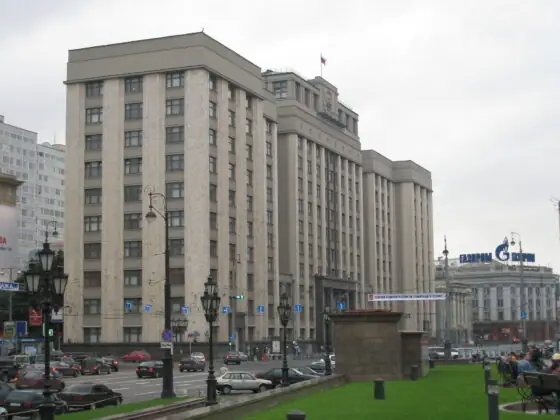(PONARS Policy Memo) The topic of collective responses to terrorism, extremism, and transnational organized crime has long dominated discussions within the Collective Security Treaty Organization (CSTO) and Shanghai Cooperation Organization (SCO). However, they routinely fail to address the multiple and complex ways that these activities intersect. This is a serious oversight. It makes collective security initiatives incapable of appropriately countering local and regional security threats. Moreover, by neglecting to address the shared root causes of criminal and terrorist activity in the region, the CSTO and SCO perpetuate autocracy and institutional deficiencies in member states.
Inadequate Coordination and Focus
In May 2016, CSTO police chiefs and deputy interior ministers gathered in Yerevan to discuss issues related to regional cooperation in the fight against organized crime, drug trafficking, and terrorism. A month later, Yerevan hosted a meeting of CSTO Security Council secretaries dedicated to collective counterterrorism responses. Almost concurrently, the SCO held its jubilee summit in Tashkent where leaders reaffirmed their support for closer counterterrorism cooperation—they even quoted CSTO concerns about the rising influence of the Taliban and ISIS in Afghanistan. They did not address the ways in which terrorism, insurgency, and organized crime intersect in the region, and how the operational environment where CSTO and SCO resources are deployed should interact with the terror-crime nexus.

The reasons for neglecting these hot spots are the same that have long cramped effective collective security responses in the region. To begin with, each state has strong divergent interests and both organizations lack the sustainable capacity to meet new security challenges. Regional governments view security cooperation as an instrument for their national and international self-assertion. Consequently, they are interested in regional projects that shore up their power and divert attention from domestic sources of regional security concerns. Not only does this fail to effectively address terrorism-criminal connections, it also advances the very political and security malformations responsible for engendering them.
Neither the CSTO nor SCO is oblivious to the links between terrorism and transnational crime. A number of declarations adopted by both in recent years acknowledge the futility of fighting terrorism without disrupting its sources of funding. While the drug trade has provided funding for insurgency and terrorist attacks in the region, an exclusive focus on the operational dimension of the relationship by the leadership of the CSTO and SCO conceals the more complex nature of the terrorism-crime nexus. A few examples of the intersections in Central Asia illustrate the point.
According to reports from Afghanistan’s Drug Control Agency, insurgents of the Islamic Movement of Uzbekistan (IMU) and Taliban have influence in several districts of the Takhar province that shares a border with the Khatlon district of Tajikistan. By controlling the border areas, the insurgents are able to tap into the heroin pipeline running northward. Takhar is the only province in the region where Central Asian insurgents tax the drug trade. While the precise nature of this taxation is unclear, the United Nations Mission in Afghanistan reports that an alliance was formed between insurgents and local drug smugglers to maintain control of the border.
Even when Islamist, militant, and criminal groups appear to operate independently, their activities often concentrate in the same geographical areas. The Tajik government in Dushanbe, for example, has tenuous control over Gorno-Badakhshan (GBAO), an impoverished, sparsely-populated province bordering Kyrgyzstan, China, and Afghanistan. It is home to minority Pamiri ethnic groups who often feel unrepresented by the current Tajik government. GBAO is controlled by former warlords and is a hive of drug operations. The geographical and socio-political conditions there have allowed it to be a stronghold of political and ethnic opposition to the government of President Emomali Rahmon, who blamed a series of violent clashes between the government troops and militants in 2010, 2011, and 2012 on the “Islamists.” In 2015, Dushanbe closed the mountainous Gorno-Badakhshan to all foreign tourists citing the threat of a spillover of Islamist insurgency across the border in Afghanistan. However, it is very unlikely that the predominantly Sunni Taliban would have much in common with the Pamiri ethnic groups that adhere to Ismaili Islam. If there were any links, those would have to do with drug trafficking and other illicit trade.
Kazakhstan’s image as an island of stability in a tumultuous region was tarnished in 2011 when a spate of violence occurred (suicide bombings, explosions, and shootouts with security forces). Astana eventually laid blame for the terrorist attacks on Islamists (including Jund al-Khilafah) even though the criminal past of Kazakh extremists seems to support the original interpretation of these incidents as violence committed by organized criminal groupings. The very identity—criminal or Islamist—of Jund al-Khilafah members in Kazakhstan has been in question because of their involvement in organized crime.
Collective (Non)Reponses
The frequency of organized violence has raised concern in the SCO and CTSO. The SCO’s efforts at counteracting terrorism and drug trafficking have been confined to expressions of political support to member-state counterterrorism measures and drafting programmatic documents expressing the need and intent to coordinate military and political steps. The CSTO has set up a multi-level system of collective responses. Its Collective Rapid-Response Force was created in 2009 to counter aggression, terrorist attacks, and drug trafficking operations on the territory of the member-states. This Force has staged regular joint combat exercises, special operations, and tactical trainings. In the area of anti-drug trafficking, the CSTO has carried out annual international counter-narcotics operation involving troops from the drug control, security and internal affairs agencies, border and custom services, and financial intelligence units. The SCO’s Regional Anti-Terrorist Structure has carried joint counterterrorism maneuvers but has been less active than the CSTO in terms of organizing member-states’ operations aimed at disrupting terrorism financing and money laundering. The CSTO and SCO conventional war games and counterterrorism and anti-narcotics exercises, however, were planned in isolation from each other, which reflects a lack of coordination, particularly on the key areas of where terrorism, insurgency, and organized crime meet.
Some efforts on the ground seem promising, but they can be misguided. For example, in recent military drills, CSTO troops practiced a scenario involving insurgents crossing from Afghanistan into Tajikistan. The test was about hundreds (even thousands) of ISIS fighters, Taliban militants, and operatives of Islamist organizations training in northern Afghan provinces in preparation for acts of terrorism and subversion. However, the motives for a possible violent incursion into Central Asia from the south are few. The Taliban, for its part, has no tactical, strategic, or ideological interest in crossing over into the post-Soviet region. For militants of all stripes, however, establishing control of northern drug trafficking routes are worthy and realistic goals. In Afghanistan, the remote Badakhshan province, which borders Gorno-Badakhshan, is a bedrock of anti-government forces. These provinces also provide the shortest drug trafficking route from the south toward Russia and Europe (via Central Asia). It has become the militants’ “financial center,” where the production of heroin in local laboratories has soared in recent years, yielding high revenues from the drug trade. It is not coincidental that Badakhshan and other northern Afghan provinces have seen an increase in militant activity. If militants themselves were to cross the Central Asian border, they would risk skirmishes with the national and regional military forces for criminal, rather than religious or ideological, purposes. The presence of, and opportunities for, criminal networks are the actual, active threats, yet not the focus of “security drills.”
Cracks
Both the CSTO and SCO currently lack the sustainable capacity to provide an effective collective response to regional security challenges. From the operational standpoint, their military and security personnel have insufficient experience with inter-agency cooperation and training. They would be hard pressed to tell apart drug traffickers (and their associated operations) from Islamists (and their associated maneuvers). There is a real shortage of military and security potential and personnel in the southern Central Asian regions. Russia’s forces, doctrines, weapons, and technology dominate CSTO training and special operations. Its military and technological sophistication, advancements in network-centered warfare capabilities, and battleground experiences in conflicts like Syria and Ukraine are in stark contrast to the military capabilities of other CSTO members. Taking into consideration the widening gap between Russian and member-state forces and the economic crisis in Russia, the Kremlin faces having to do “more with less.” Russia already dismantled its Federal Drug Control Service in May 2016 due to budget shortfalls. This also calls into question the future of the CSTO’s Collective Rapid-Response unit. Russia’s military reforms resulted in a situation where the country does not have enough forces to defend its own territory, much less to sustain the high troop levels required for strengthening security on CSTO borders.
The absence of Uzbekistan and Turkmenistan in the CSTO leaves another major crack in the regional security architecture. Their unwillingness to deepen security cooperation with Russia is emblematic of diverging interests in the region and deep distrust between member-states. Moscow has sought to convince regional capitals that Russia is the only guarantor of stability and security in Central Asia via collective exercises and military aid. Fearing excessive Russian military presence, the leaders of Central Asian states have repeatedly altered narratives about the nature and extent of national security threats. Tajikistan, for example, has sought to cast itself as the frontline against the spillover of Afghanistan’s insurgency and employed this narrative to secure international military aid. On the other hand, it has also dismissed the threat of Islamist violence and insisted on the preparedness of its own security forces to counter any threat.
In a brief look at other stakeholders, Kyrgyzstan, similar to Tajikistan, has used membership in regional organizations for gaining access to modern security equipment and training and buying diplomatic leverage with the United States. For Kazakhstan, CSTO and SCO membership has been integral to it multi-vector foreign policy and external image building, while China has utilized the SCO as a platform for conducting bilateral negotiations related to energy and trade with Central Asian states. At the end of the day, all CSTO and SCO members are loath to intervene in the internal affairs of other members, preferring to cite “non-interference” in matters that fall within national jurisdictions as a foundational principle. The sovereignty umbrella has also been used to cover the instances of state-organized crime connections that further hinder the regional security cooperation. Finally, the fairly recent addition of India and Pakistan to the SCO is strategically beneficial from the standpoint of addressing Islamist radicalization threats, but given the culture of the SCO and the bilateral history of Delhi and Islamabad, their inclusion may actually strain some focus and functionality.
Conclusion
The future of earnest security cooperation in the Central Asian region appears bleak. The rhetoric of CSTO and SCO leadership linking instability in Afghanistan with security-related developments in Central Asia has diverted attention from the region’s criminal hinter- and borderlands and the domestic undercurrents that permit violence, criminality, and extremism. Getting to the root of the intersection between terrorism and crime calls for an integrated framework of coordinated inter-governmental responses, keeping a close eye on linkages between counterterrorism, counterinsurgency, and anti-drug trafficking. A multi-level, inter-agency, and inter-state approach can only germinate in an environment of trust and shared understanding about the true sources of security concerns. These are difficult to come by in a region where geopolitical competition between actors large and small is intensifying and local leaders exploit collective security projects to entrench their regimes.
Mariya Omelicheva is Associate Professor in the Department of Political Science at the University of Kansas. Aspects of research on this topic were funded by the Minerva Initiative Grant “Trafficking/Terrorism Nexus in Eurasia.”
[PDF]










